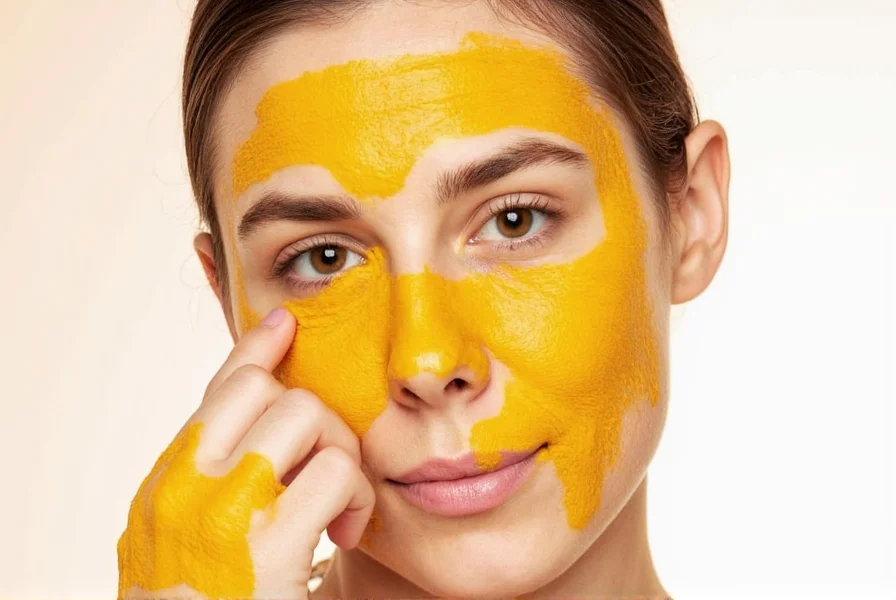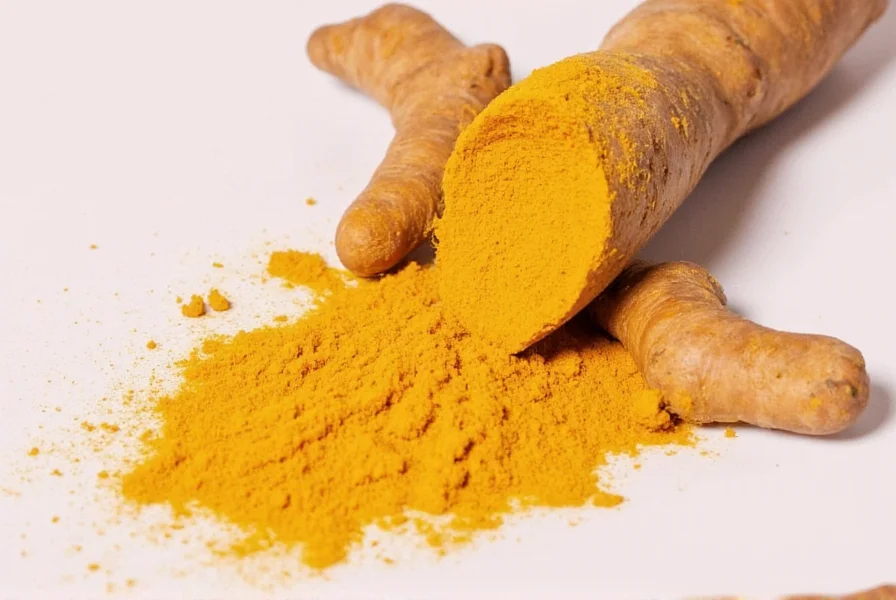Many people search for natural solutions to manage acne, and turmeric spice has gained popularity as a potential remedy. This ancient spice, commonly found in curry powders and traditional medicine, contains curcumin—the compound responsible for its vibrant yellow color and potential skin benefits. While turmeric isn't a miracle cure, understanding its actual capabilities can help you make informed decisions about incorporating it into your skincare routine.
The Science Behind Turmeric and Acne
Curcumin, the active compound in turmeric spice for acne treatment, demonstrates three properties relevant to acne management:
- Anti-inflammatory effects: Reduces redness and swelling associated with inflammatory acne lesions
- Antimicrobial activity: May inhibit growth of Cutibacterium acnes (the bacteria contributing to acne)
- Antioxidant properties: Helps protect skin from oxidative stress that can worsen inflammation
According to a 2016 review published in Phytotherapy Research, curcumin's anti-inflammatory effects show promise for various skin conditions, including acne. However, the researchers noted that more targeted clinical trials are needed specifically for acne treatment.

What Research Says About Turmeric for Acne
Current scientific evidence regarding turmeric spice for acne remains limited but suggestive:
| Study Type | Findings | Limitations |
|---|---|---|
| In vitro (lab) studies | Curcumin inhibits C. acnes growth and reduces inflammatory markers | Doesn't reflect real-world skin conditions |
| Animal studies | Topical curcumin reduced inflammation in acne-like conditions | Results don't always translate to humans |
| Human clinical trials | Limited studies show modest improvement in mild inflammatory acne | Small sample sizes; short duration; often combined with other ingredients |
A 2020 pilot study in the Journal of Cosmetic Dermatology found that a topical formulation containing curcumin showed improvement in mild to moderate acne after four weeks, but the study included only 30 participants and used a combination product (not pure turmeric).
How to Use Turmeric for Acne: Practical Methods
If you're considering turmeric for acne treatment, proper application matters. Here are evidence-informed methods:
Topical Applications
For those exploring how to use turmeric for acne scars or active breakouts:
- Basic turmeric face mask: Mix 1 teaspoon turmeric powder with 2 teaspoons honey and 1 teaspoon plain yogurt. Apply for 15-20 minutes before rinsing. Honey provides additional antimicrobial benefits while yogurt soothes skin.
- Spot treatment: Combine equal parts turmeric powder and water to form a paste. Apply directly to individual pimples for 10-15 minutes. This turmeric acne spot treatment targets specific inflamed areas.
- Overnight treatment: Mix turmeric with a carrier oil like jojoba or rosehip oil (1:5 ratio). Apply a thin layer to clean skin before bed. The oil helps with absorption while minimizing staining.
Important Application Tips
- Always perform a patch test 24 hours before full application
- Use gloves to prevent yellow staining on hands
- Apply to clean, dry skin
- Start with lower concentrations (¼ teaspoon turmeric per application)
- Rinse with lukewarm water, not hot water which can increase staining
- Follow with a gentle moisturizer
Limitations and Potential Side Effects
Understanding the realistic expectations of turmeric for acne treatment prevents disappointment and potential skin issues:
Realistic Expectations
- Turmeric works best for mild inflammatory acne, not severe cystic acne
- Results typically take 4-8 weeks of consistent use
- It complements, but doesn't replace, established acne treatments
- Effectiveness varies significantly between individuals
Potential Side Effects
- Skin staining: The bright yellow pigment can temporarily stain light-colored skin
- Irritation: Some people experience redness, itching, or burning, especially with sensitive skin
- Allergic reactions: Rare but possible, particularly for those allergic to ginger or other related plants
- Photosensitivity: Turmeric may increase sun sensitivity in some individuals
Turmeric vs. Other Natural Acne Remedies
When considering natural remedies for acne with turmeric, it helps to understand how it compares to other popular options:
- Turmeric vs. tea tree oil: Tea tree oil has stronger evidence for acne treatment but may cause more irritation. Turmeric offers anti-inflammatory benefits that tea tree oil lacks.
- Turmeric vs. aloe vera: Aloe vera soothes but has less antimicrobial action. The two work well together in formulations.
- Turmeric vs. honey: Honey has stronger antibacterial properties but less anti-inflammatory effect. Combining them creates a synergistic treatment.
A 2017 comparative study in Clinical, Cosmetic and Investigational Dermatology found that while tea tree oil showed slightly better results for reducing acne lesions, turmeric demonstrated superior anti-inflammatory effects, suggesting they might work best in combination for comprehensive acne management.
When to Consult a Professional
Natural approaches like turmeric spice for acne should complement—not replace—professional medical advice. Consult a dermatologist if:
- Your acne doesn't improve after 8-12 weeks of consistent treatment
- You develop painful cysts or nodules beneath the skin surface
- Acne leaves dark spots or scars that don't fade
- Over-the-counter treatments cause significant irritation
- Acne significantly impacts your quality of life or self-esteem
Board-certified dermatologists can provide prescription treatments that work faster and more effectively than natural remedies alone, especially for moderate to severe acne. They can also help you safely combine natural approaches like turmeric with evidence-based medical treatments.
Creating a Comprehensive Acne Management Plan
For best results with turmeric for acne treatment, incorporate it into a complete skincare strategy:
- Gentle cleansing twice daily with non-comedogenic products
- Weekly exfoliation with salicylic acid (0.5-2%)
- Targeted treatment with turmeric 2-3 times weekly
- Daily sunscreen (acne treatments increase sun sensitivity)
- Non-comedogenic moisturizer to maintain skin barrier
- Consistent routine for at least 8 weeks before assessing results
Remember that does turmeric help with acne depends on your specific skin type, acne severity, and consistency of use. It works best as part of a comprehensive approach rather than a standalone solution.
Frequently Asked Questions
How long does it take for turmeric to show results on acne?
Most people notice modest improvements in inflammatory acne after 4-6 weeks of consistent use. Significant results typically require 8-12 weeks. Turmeric works gradually as it reduces inflammation rather than providing immediate antibacterial effects like some prescription treatments.
Can turmeric remove acne scars?
Turmeric may help improve the appearance of post-inflammatory hyperpigmentation (dark spots left after acne heals) due to its anti-inflammatory properties, but it won't remove true indented or raised acne scars. For significant scar improvement, professional treatments like laser therapy or microneedling are more effective.
Is it safe to use turmeric on acne every day?
Using turmeric daily may cause irritation or excessive staining for some skin types. Most dermatologists recommend starting with 2-3 times weekly and monitoring your skin's response. If well-tolerated after 2-4 weeks, you can gradually increase frequency, but daily use isn't necessary for benefits.
What's the best way to prevent turmeric from staining my skin?
To minimize staining: use lower concentrations (¼-½ teaspoon per application), mix with white yogurt or milk instead of water, rinse with lukewarm water (not hot), and follow with a gentle cleanser. Staining is usually temporary and fades within 24 hours. Applying a thin layer of oil before turmeric treatment can create a barrier that makes removal easier.
Can I use turmeric with other acne treatments?
Yes, but introduce one product at a time to monitor reactions. Turmeric generally combines well with benzoyl peroxide, salicylic acid, and retinoids, but space applications by at least 30 minutes. Avoid combining with other potentially irritating ingredients like high-concentration acids or physical scrubs. Always patch test combinations before full application.











 浙公网安备
33010002000092号
浙公网安备
33010002000092号 浙B2-20120091-4
浙B2-20120091-4